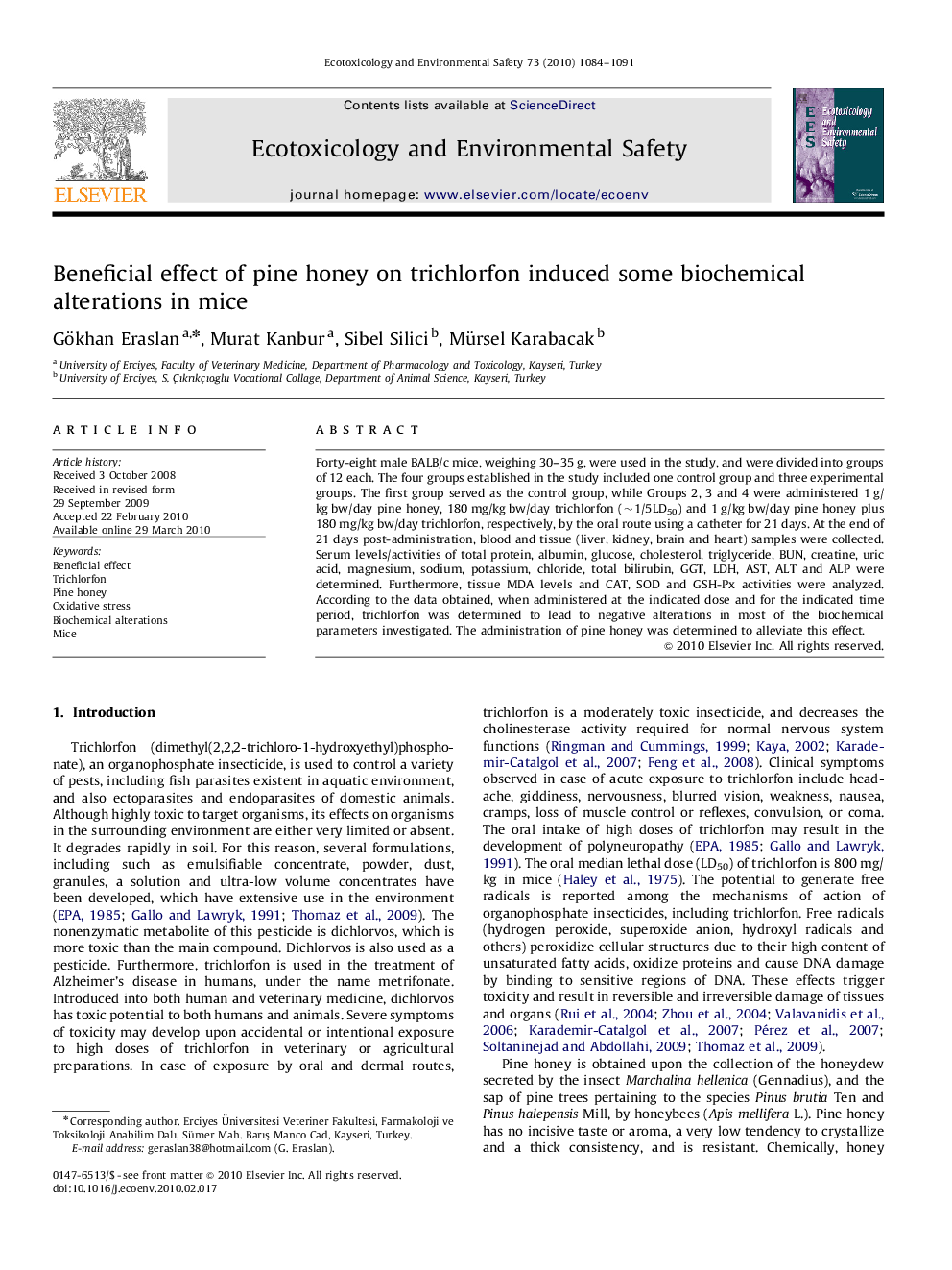| Article ID | Journal | Published Year | Pages | File Type |
|---|---|---|---|---|
| 4421692 | Ecotoxicology and Environmental Safety | 2010 | 8 Pages |
Forty-eight male BALB/c mice, weighing 30–35 g, were used in the study, and were divided into groups of 12 each. The four groups established in the study included one control group and three experimental groups. The first group served as the control group, while Groups 2, 3 and 4 were administered 1 g/kg bw/day pine honey, 180 mg/kg bw/day trichlorfon (∼1/5LD50) and 1 g/kg bw/day pine honey plus 180 mg/kg bw/day trichlorfon, respectively, by the oral route using a catheter for 21 days. At the end of 21 days post-administration, blood and tissue (liver, kidney, brain and heart) samples were collected. Serum levels/activities of total protein, albumin, glucose, cholesterol, triglyceride, BUN, creatine, uric acid, magnesium, sodium, potassium, chloride, total bilirubin, GGT, LDH, AST, ALT and ALP were determined. Furthermore, tissue MDA levels and CAT, SOD and GSH-Px activities were analyzed. According to the data obtained, when administered at the indicated dose and for the indicated time period, trichlorfon was determined to lead to negative alterations in most of the biochemical parameters investigated. The administration of pine honey was determined to alleviate this effect.
